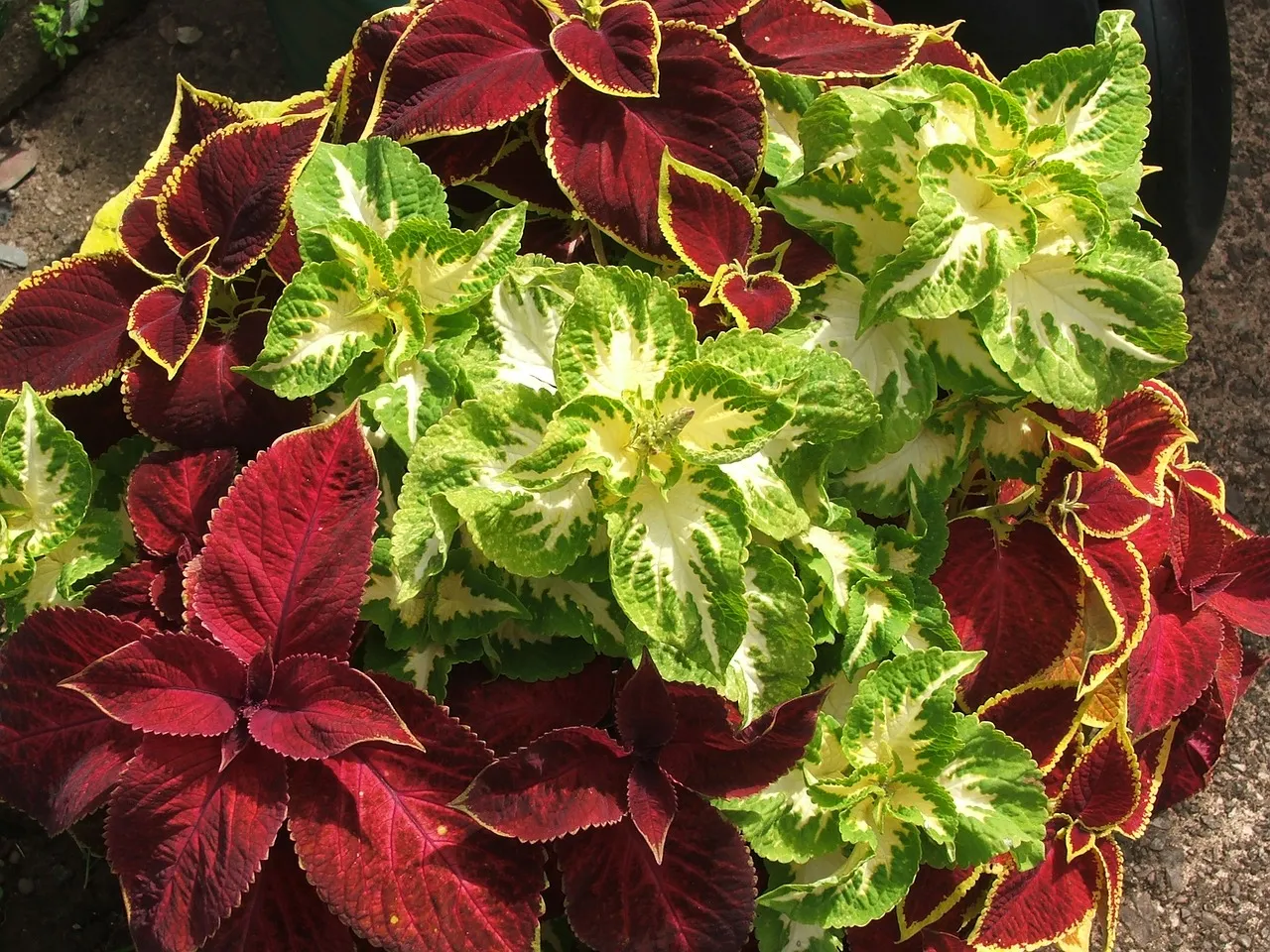Looking to add some vibrant greenery to your balcony? Look no further than growing coleus, a versatile and aesthetically pleasing plant that grows in container gardens. Showy foliage and low-maintenance coleus are perfect for balcony garden enthusiasts. In this blog post, I share valuable care tips and tricks to help coleus plants grow in a balcony environment. From choosing the right strains to understanding your need for sunlight, you’re in the right place. Get ready to transform your balcony into a lush and colorful oasis with these essential tips for growing coleus on your balcony.
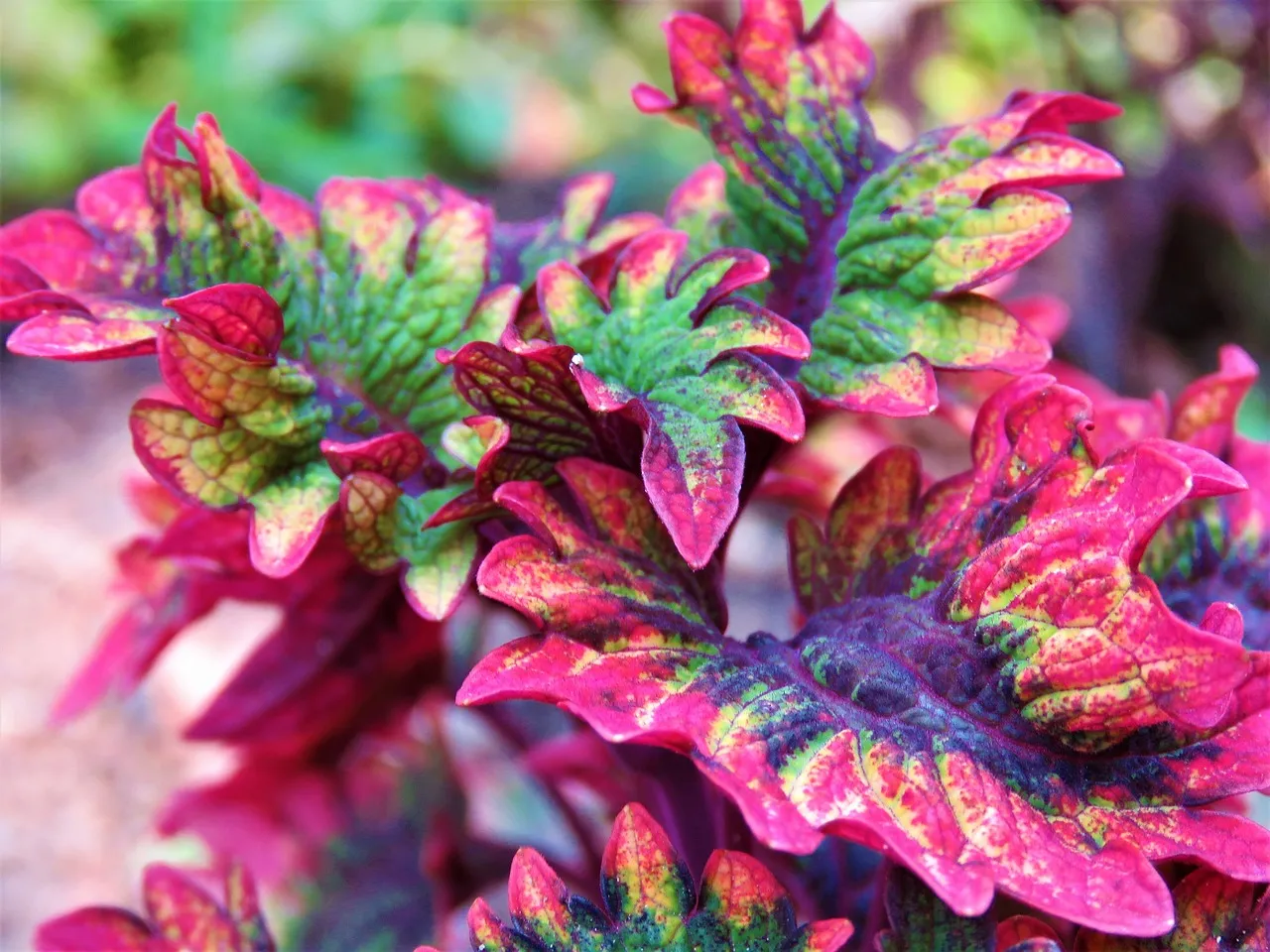
The Benefits of Growing Coleus on Your Balcony: Enhancing Your Outdoor Space
Growing coleus on your balcony offers a multitude of benefits that go beyond adding a splash of color to your outdoor space. Not only does coleus provide a stunning visual display with its vibrant foliage, but it also has the power to enhance your balcony’s overall ambiance. The lush and leafy appearance of coleus plants creates a sense of tranquility and relaxation, transforming your balcony into a cozy sanctuary where you can unwind and reconnect with nature.
Additionally, coleus is a great option for enhancing the air quality in your balcony garden because of its reputation for air purification. For individuals with little gardening area, coleus offers a flexible alternative due to its propensity to flourish in containers. By including coleus in your balcony garden, you can enhance the beauty of your outdoor area while also taking advantage of the many advantages it offers for your general health.
Types of Coleus
For your balcony, you have a lot of beautiful coleus varieties to pick from. The unique characteristics and eye-catching attractiveness that each species of coleus gives enhance your balcony garden. You could like to employ the following popular coleus cultivars in your outdoor area.
Solenostemon scutellarioides:
Coleus Solenostemon scutellarioides is widely used and easily available. It has gorgeous leaves in a variety of vibrant colors, including green, purple, red, and yellow. The leaves of this variety often have unusual patterns such as scalloped edges, rough texture or contrasting spots. Including these vivid coleus varieties in your balcony garden is a great way to make it more visually appealing.
Solenostemon blumei:
Also known as painted nettle, Solenostemon blumei is another common coleus. It is characterized by large, heart-shaped leaves and a great variety of color combinations. The leaves can display intricate patterns, such as stripes, veins or spots, creating a visually appealing effect. Solenostemon blumei varieties are ideal for adding a whimsical touch and charm to your balcony garden.
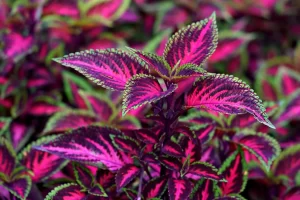
Solenostemon scutellarioides:
‘Kong’ series: The coleus ‘Kong’ series is noted for its huge and stunning leaves, making it a standout choice for any balcony garden. When compared to other coleus species, these variations have larger and thicker leaves. The ‘Kong’ coleus provides a powerful statement to your outdoor space and is guaranteed to attract the eye of observers with hues ranging from brilliant greens to deep burgundy and bronze tones. In your balcony garden, embrace the brilliance and charm of these vigorous plants.
Solenostemon scutellarioides ‘Wizard’ series:
For those seeking coleus varieties that are more compact in their growth habit, the ‘Wizard’ series is a perfect selection. These coleus types are particularly well-suited for smaller balconies or containers. The ‘Wizard’ coleus showcases an impressive array of colors, ranging from rich purples and maroons to vibrant lime greens and golden yellows. With their compact size and captivating foliage, these varieties offer versatility and can thrive in balconies of any size.
Solenostemon scutellarioides ‘Sunlover’ series:

The ‘Sunlover’ series of coleus is aptly named for its exceptional tolerance to sun exposure. These carefully bred varieties are specifically designed to withstand direct sunlight without the risk of scorching or fading. With a wide range of vibrant colors and captivating patterns, ‘Sunlover’ coleus is an excellent choice for balconies that receive ample sunlight or have varying light conditions. Embrace the beauty of these sun-loving coleus varieties to add a splash of color to your balcony with confidence.
By exploring the different types of coleus available, you can select varieties that best suit your balcony’s environment and your personal preferences. Whether you prefer bold and dramatic foliage or delicate and intricate patterns, there’s a coleus type that will add beauty and charm to your balcony garden. Experiment with different varieties and combinations to create a visually stunning and captivating outdoor space.
Choosing the Right Coleus Varieties for Your Balcony Garden: Aesthetic and Growth Considerations
When it comes to growing coleus on your balcony, selecting the right varieties is crucial for a successful and visually appealing garden. With a wide array of coleus varieties available, it’s essential to consider both aesthetic and growth considerations before making your choices.
Firstly, think about the overall aesthetic you want to achieve in your balcony garden. Coleus plants come in a vast range of colors, leaf shapes, and patterns. Some varieties have bright and bold colors, such as vibrant reds, purples, and yellows, which can create a striking focal point in your garden. Other varieties offer more subtle tones and delicate patterns, perfect for adding a touch of elegance and sophistication to your outdoor space. Consider your personal preferences and the overall style of your balcony when selecting coleus varieties that will complement your design vision.
Aesthetics are essential, but so are growing considerations. Consider the size and area available on your balcony. Some coleus types grow more compactly, making them ideal for smaller balconies or pots. If you have limited space but yet want to appreciate the beauty of coleus, these kinds are wonderful alternatives. If you have a bigger balcony, you may choose coleus kinds that grow more vigorously, allowing them to expand and occupy the available area.
Another growth consideration is the amount of sunlight your balcony receives. Coleus varieties have different light requirements, with some being more shade-tolerant while others thrive in full sun. Assess the sunlight conditions on your balcony throughout the day and choose coleus varieties that will thrive in that specific environment. This will ensure that your plants receive the optimal amount of light and continue to grow healthily.
Lastly, consider the maintenance level of different coleus varieties. Some varieties may require more frequent pruning or pinching to maintain their desired shape and prevent them from becoming leggy. If you prefer low-maintenance plants, look for coleus varieties that naturally have a bushy and compact growth habit, reducing the need for regular trimming.
By carefully considering both aesthetic and growth factors, you can choose the right coleus varieties that will thrive and enhance the beauty of your balcony garden. Remember to assess your balcony’s available space, lighting conditions, and your personal preferences when making your selections. With the right coleus varieties, your balcony will be transformed into a vibrant and captivating oasis that you can enjoy year-round.
Understanding Sunlight Requirements for Coleus: Finding the Ideal Spot on Your Balcony
Understanding the sunlight requirements of coleus plants is essential for ensuring their optimal growth and health on your balcony. While coleus is known for its ability to thrive in partially shaded areas, it’s crucial to find the ideal spot on your balcony that provides the right amount of sunlight.
Coleus generally prefers bright, indirect light rather than direct sunlight. Too much direct sunlight can cause the leaves to scorch and fade, affecting the plant’s overall health and appearance. Therefore, it’s best to avoid placing your coleus plants in areas that receive intense, prolonged sunlight during the hottest parts of the day.
On the other hand, too little light can result in leggy growth and dull-colored foliage. Therefore, finding a balance is key. Look for areas on your balcony that receive partial shade or filtered light, such as under the canopy of taller plants or near a trellis. These spots provide the ideal lighting conditions for coleus, allowing them to thrive and showcase their vibrant foliage.
Observing the sunlight patterns on your balcony throughout the day is crucial in determining the best spot for your coleus plants. Observe which areas receive bright, indirect light for most of the day, while being shielded from the direct rays of the sun. This could be on the east-facing side of your balcony in the morning or on the west-facing side in the afternoon. By understanding the specific lighting conditions of your balcony, you can identify the perfect spot that meets the sunlight requirements of coleus.
In situations where your balcony receives ample sunlight throughout the day, you can still grow coleus by providing some protection from the direct sun. This can be achieved by using shade cloths, sheer curtains, or placing your coleus pots in areas with dappled sunlight. These measures help diffuse the intense sunlight and create a more suitable environment for your coleus plants.
Remember that each balcony is unique in terms of sunlight exposure, so it’s important to assess your specific conditions and make adjustments accordingly. By understanding the sunlight requirements of coleus and finding the ideal spot on your balcony, you can ensure that your plants thrive, showcasing their vibrant and eye-catching foliage all season long.
Soil and Pot Selection: Creating the Perfect Growing Environment for Coleus on Your Balcony
Creating the perfect growing environment for coleus on your balcony starts with choosing the right soil and pots. The soil you use should be well-draining to prevent waterlogging, as coleus plants are susceptible to root rot in overly moist conditions. A good potting mix or a combination of potting soil, perlite, and peat moss is ideal for providing adequate drainage while retaining enough moisture for the plants.
When selecting pots for your coleus, consider the size and material. The pots should be large enough to accommodate the root system of your coleus plants and allow for proper growth. A pot that is too small can restrict the growth and development of the plant. Additionally, choosing pots with drainage holes is crucial to prevent water buildup and maintain optimal soil moisture levels.
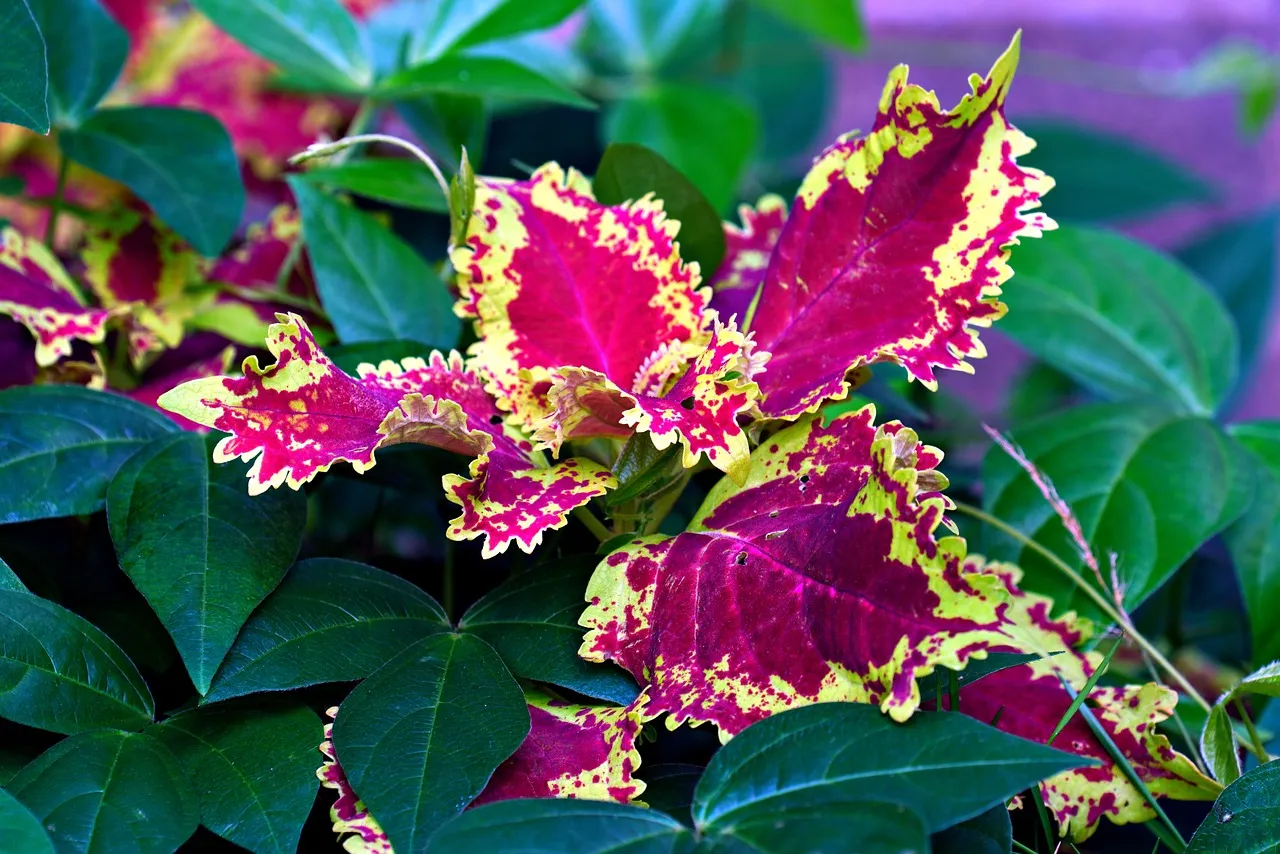
The material of the pots can also impact the growing environment. Terracotta pots are popular for their breathability, allowing excess moisture to evaporate from the soil. However, they can also dry out quickly, requiring more frequent watering. Plastic or resin pots, on the other hand, retain moisture better and are lighter in weight, making them easier to move around on your balcony. Consider the specific needs of your coleus plants, as well as your own preferences and balcony conditions, when selecting the pot material.
When planting your coleus, ensure that the soil is evenly moist but not saturated. Water the plants thoroughly, allowing excess water to drain out of the pots. Coleus plants prefer consistently moist soil, so monitor the moisture levels regularly and water as needed. Avoid overwatering, as this can lead to root rot, while underwatering can cause the plants to wilt and suffer.
By selecting the right soil and pots for your coleus, you create an optimal growing environment that promotes healthy root development and overall plant growth. Remember to provide adequate drainage, choose appropriately sized pots, and consider the material that suits your coleus and balcony conditions. With the right soil and pot selection, your coleus plants will flourish and bring vibrant colors to your balcony garden throughout the growing season.
Watering Techniques for Coleus on the Balcony: Maintaining Optimal Moisture Levels
Proper watering techniques are essential for maintaining optimal moisture levels for coleus plants on your balcony. Balancing the watering needs of your coleus is crucial, as overwatering or underwatering can have detrimental effects on their health and growth.
When watering your coleus, it’s important to water deeply but infrequently. This means saturating the soil thoroughly during each watering session, allowing the water to penetrate the root zone. However, it’s equally important to allow the soil to dry out slightly between watering intervals. Coleus plants prefer consistently moist soil, but they don’t tolerate waterlogged conditions.
To determine when to water your coleus, check the moisture level of the soil using your finger. Insert it into the soil up to the first knuckle. It’s time to water if the soil seems dry at this depth. However, if the soil feels moist, it’s best to wait a little longer before watering again. This method helps prevent overwatering by ensuring that the soil has a chance to dry out slightly between waterings.
Another technique to maintain optimal moisture levels is mulching. Applying a layer of organic mulch around the base of your coleus plants helps to conserve moisture, reduce weed growth, and regulate soil temperature. Organic materials such as straw, bark chips, or compost can be used as mulch. The mulch acts as a protective layer, preventing excessive evaporation and helping to maintain a more consistent moisture level in the soil.
During hot and dry periods, you may need to water your coleus more frequently. The key is to observe the plant’s appearance and response to watering. If the leaves start to wilt or the soil feels extremely dry, it’s a sign that your coleus needs water. However, be cautious not to overwater, as it can lead to root rot and other moisture-related issues.
In summary, watering techniques for coleus on the balcony involve deep watering, allowing the soil to dry slightly between waterings, and utilizing organic mulch to conserve moisture. By practicing these techniques, you can maintain optimal moisture levels for your coleus plants, ensuring their healthy growth and vibrant foliage. Remember to observe the soil moisture and the plant’s response to watering, adjusting your watering frequency accordingly.
Fertilizing Coleus Plants: Nourishing Your Balcony Garden for Healthy Growth
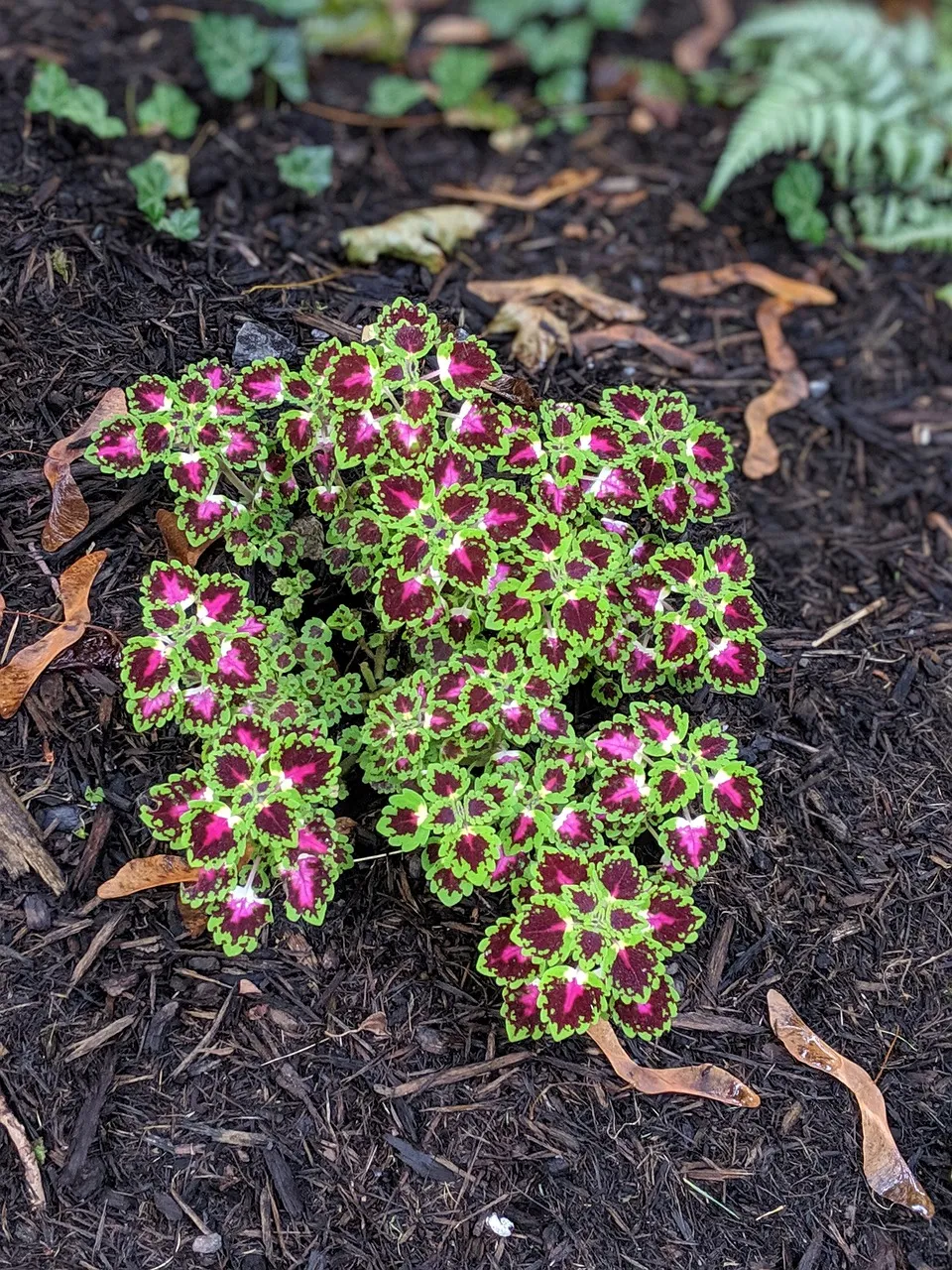
Fertilizing coleus plants is an important aspect of caring for your balcony garden and promoting healthy growth. Providing the right nutrients can enhance the vibrancy of their foliage and support overall plant health. When it comes to fertilizing coleus, a balanced approach is key.
Before applying any fertilizer, it’s crucial to understand the nutritional needs of your coleus plants. Generally, coleus thrives with a balanced, all-purpose fertilizer that contains equal amounts of nitrogen, phosphorus, and potassium (N-P-K). This balanced ratio helps promote healthy foliage growth, strong root development, and overall plant vigor.
The timing of fertilization is also important. It’s best to fertilize coleus plants during the active growing season, which is typically spring and summer. During this time, the plants are actively producing new leaves and stems. Applying fertilizer once every four to six weeks provides a steady supply of nutrients to support their growth.
When applying the fertilizer, follow the package instructions for the recommended amount. It’s essential not to over-fertilize, as it can lead to salt buildup in the soil, causing root damage and other problems. Applying a moderate amount of fertilizer ensures that the plants receive adequate nutrition without causing harm.
Consider using slow-release or granular fertilizers for coleus, as they provide a gradual release of nutrients over time. These types of fertilizers are convenient for balcony gardening since they require less frequent application and provide a consistent supply of nutrients.
In addition to regular fertilization, it’s important to monitor your coleus plants for any signs of nutrient deficiencies. Yellowing leaves, stunted growth, or a lack of vibrancy in the foliage can indicate a need for additional nutrients. In such cases, you can supplement with a liquid fertilizer or foliar spray to provide a quick boost of nutrients to the plants.
Remember that while fertilizing is beneficial, it’s equally important not to overdo it. Proper fertilization, in combination with adequate watering and sunlight, creates an optimal growing environment for your coleus plants on the balcony. By nourishing your balcony garden with the right fertilizers and maintaining a balanced approach, you can enjoy healthy, thriving coleus plants with stunning foliage all season long.
Pruning and Pinching Tips for Coleus: Shaping and Promoting Bushier Growth on Your Balcony
Pruning and pinching are essential techniques for shaping and promoting bushier growth in your coleus plants on the balcony. By selectively removing certain parts of the plant, you can encourage branching, maintain a compact shape, and enhance the overall appearance of your coleus.
One of the primary goals of pruning coleus is to prevent leggy growth and encourage a more compact, bushier form. Start by regularly removing any dead, damaged, or yellowing leaves. This not only improves the plant’s aesthetics but also prevents the spread of diseases and pests. Use clean and sharp pruning shears or scissors to make clean cuts, ensuring minimal damage to the remaining plant.
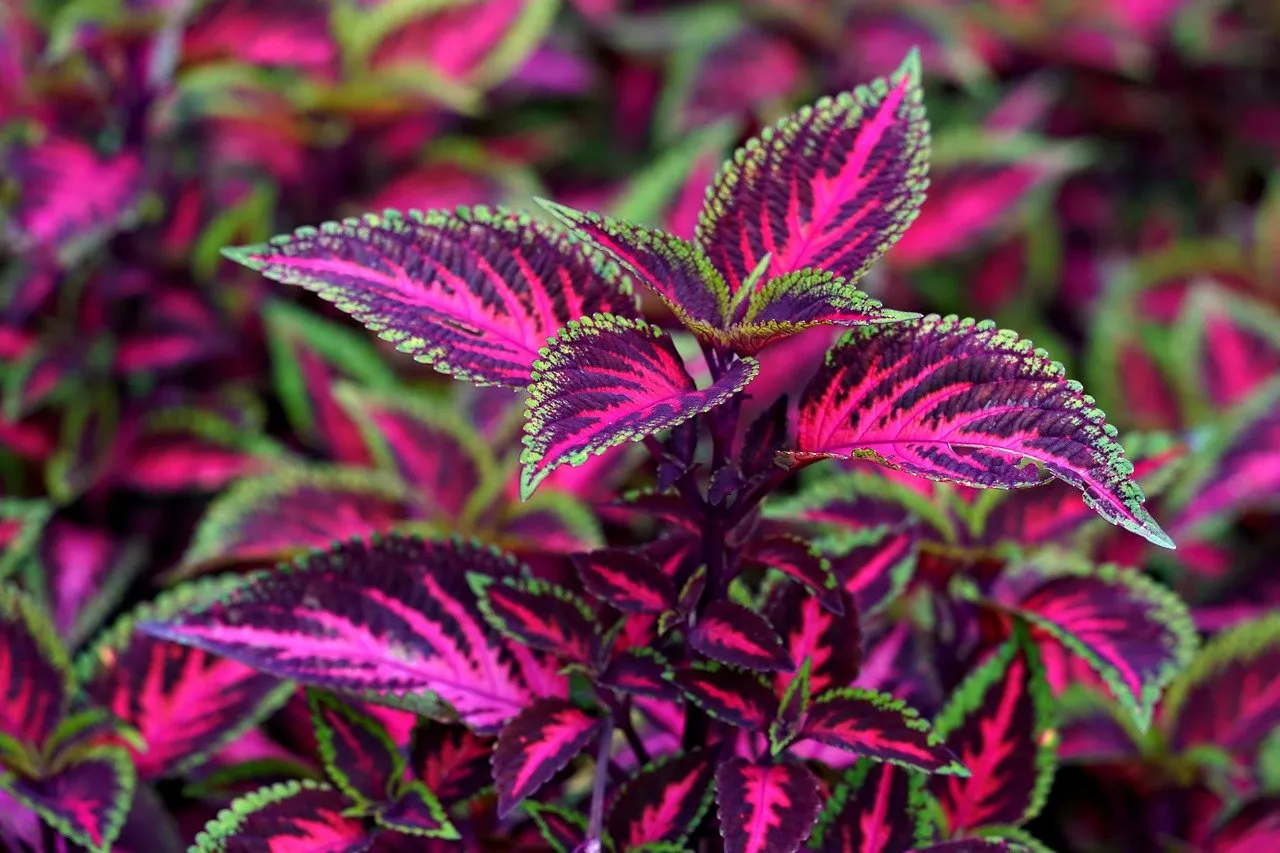
Pinching is another effective technique to promote bushier growth in coleus. Pinching involves removing the growing tips of the stems, which stimulates lateral branching and leads to a fuller, more compact plant. To pinch your coleus, simply use your thumb and forefinger to gently pinch off the top 1-2 inches of new growth. This encourages the plant to produce multiple side shoots, resulting in a denser and more attractive appearance.
Timing is crucial when it comes to pruning and pinching coleus. It’s best to start these practices when the plants are young and actively growing. Regularly prune and pinch your coleus throughout the growing season, focusing on areas that are becoming leggy or overly elongated. By doing so, you can maintain a well-balanced plant structure and prevent it from becoming top-heavy or unruly.
It’s important to note that while pruning and pinching are beneficial, avoid excessive pruning that can stress the plants. Striking a balance is key. Monitor your coleus plants closely, observing their growth patterns and adjusting your pruning and pinching practices accordingly.
In addition to shaping and promoting bushier growth, pruning and pinching also help improve airflow and light penetration within the plant. This reduces the risk of fungal diseases and ensures that all parts of the coleus receive adequate light for optimal photosynthesis.
By incorporating regular pruning and pinching into your care routine, you can sculpt and maintain attractive coleus plants on your balcony. Remember to prune selectively, remove any undesirable growth, and pinch to stimulate branching. With proper pruning and pinching techniques, you can enjoy bushier, healthier coleus plants that add a touch of beauty to your balcony garden.
Dealing with Common Pests and Diseases in Coleus Plants on Your Balcony: Prevention and Control
Dealing with common pests and diseases is an essential part of caring for your coleus plants on the balcony. While coleus plants are generally resilient, they can still be susceptible to certain pests and diseases. Being proactive and taking preventive measures is key to maintaining the health and vitality of your plants.
One of the most common pests that affect coleus plants is aphids. These small, sap-sucking insects can quickly multiply and cause damage to the foliage. To prevent aphids, regularly inspect your plants for any signs of infestation, such as curled leaves or sticky residue. If aphids are present, you can try removing them manually by spraying a strong stream of water on the affected areas. Alternatively, you can use insecticidal soap or neem oil as organic control methods.
Another pest to watch out for is spider mites, especially in dry and dusty conditions. Spider mites are tiny arachnids that feed on the sap of plants, leaving behind a telltale webbing. To prevent spider mite infestation, ensure adequate humidity around your coleus plants by misting them regularly or placing a tray of water nearby. If an infestation occurs, consider using insecticidal soap or neem oil to control the population.
Fungal diseases, such as powdery mildew and leaf spot, can also affect coleus plants. To prevent fungal diseases, avoid overhead watering and ensure good air circulation around the plants. Watering the soil directly and keeping the foliage dry can help minimize the risk of fungal growth. If you notice any signs of fungal diseases, promptly remove and dispose of the affected leaves. Applying a fungicide labeled for ornamental plants may be necessary in severe cases.
Regularly inspect your coleus plants for any signs of pest or disease problems. Early detection is crucial for effective control and prevention. Additionally, maintaining a healthy growing environment by providing adequate sunlight, proper watering, and well-draining soil can help prevent stress and make your plants more resilient against pests and diseases.
In summary, dealing with common pests and diseases in coleus plants on your balcony requires a proactive approach. Regular inspection, early detection, and preventive measures such as proper watering, good airflow, and organic pest control methods can help keep your coleus plants healthy and thriving. By being attentive and taking prompt action, you can enjoy beautiful and pest-free coleus plants on your balcony garden.
Overwintering Coleus on the Balcony: Strategies for Protecting Your Plants during Cold Seasons
Overwintering coleus on the balcony is an important consideration to ensure the survival of your plants during cold seasons. While coleus is typically grown as an annual in colder climates, it is possible to protect and preserve them for the next growing season with the right strategies.
Before the arrival of frost, it’s crucial to prepare your coleus plants for winter. Start by pruning back the plants to a manageable size, removing any leggy or diseased growth. This helps promote a more compact and healthy plant structure. Additionally, it’s advisable to propagate a few cuttings from your existing coleus plants to have backup plants for the next season.
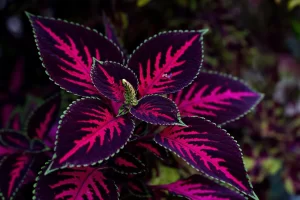
Once pruned, bring your potted coleus plants indoors to a suitable location. Choose a well-lit area that receives bright indirect sunlight. Coleus plants thrive in bright light conditions, so providing adequate light during the winter months is essential for their survival. Consider placing them near a south-facing window or supplementing with artificial grow lights if needed.
While indoors, adjust the watering frequency to accommodate the cooler conditions. In order to prevent root rot, let the soil dry out a little bit in between waterings.It’s also important to maintain moderate humidity levels around your coleus plants. Placing a tray of water or using a humidifier can help create a more suitable environment for their growth.
Monitor your coleus plants regularly for any signs of pests or diseases. Indoor environments can sometimes encourage pest infestations or fungal issues. If any problems arise, take prompt action to address them using appropriate organic pest control methods or fungicides, if necessary.
During the winter months, coleus plants may undergo some natural dormancy. They might experience a slight loss of foliage or reduced growth. This is normal and shouldn’t cause concern. With proper care and patience, your coleus plants will bounce back once the growing conditions improve.
If you live in a milder climate, it’s possible to keep your coleus plants outside with some additional protection. Consider wrapping the pots with insulating material or covering them with frost blankets during extreme cold spells. This helps provide some insulation and shields the plants from freezing temperatures.
By following these strategies for overwintering coleus on the balcony, you can protect your plants and ensure their survival until the next growing season. With proper care, your coleus plants will reward you with their vibrant foliage and beauty year after year.
Propagating Coleus: Expanding Your Balcony Garden with Cuttings or Seeds
Propagating coleus is a wonderful way to expand your balcony garden and create new plants from existing ones. There are two primary methods of propagating coleus: using cuttings or starting from seeds. Both methods have their advantages and can be successfully employed to increase your coleus collection.
One of the most popular ways to propagate coleus is through stem cuttings. This method involves taking a healthy stem from a mature coleus plant and encouraging it to develop roots. To start, select a stem that is about 4-6 inches long and has several sets of leaves. Remove the bottom leaves, leaving only a few leaves at the top. Dip the cut tip in rooting powder to promote root growth, then place it in a small pot filled with moist, well-drained soil. Cover the cut with a plastic bag or clear plastic dome to create a moist environment for root growth. Keep the soil moist but not waterlogged. Within a few weeks, you should start to see roots forming, indicating successful propagation.
Another option is to grow coleus from seeds. This method provides an opportunity to explore a wide range of coleus varieties and experiment with different colors and patterns. Start by filling a seed tray or small pot with seed starter mix. Sow the seeds on the surface, gently press the seeds into the ground and cover with a thin layer of clay or fine soil. Spray water on the floor to make sure it stays damp but not soggy. Place the tray or jar in a warm place with indirect light. Germination typically takes 1-2 weeks, depending on the variety. Once the seedlings have developed several sets of true leaves, they can be transplanted into individual pots or directly into your balcony garden.
Whether you choose to propagate coleus through cuttings or seeds, it’s important to provide the right conditions for their growth. Maintain adequate moisture levels, provide bright indirect light, and protect them from extreme temperatures. As the new plants establish and grow, continue to care for them using the tips and tricks mentioned in our previous blog posts to ensure their health and vitality.
By propagating coleus, you not only expand your balcony garden but also have the opportunity to share these beautiful plants with friends and family. Whether you opt for cuttings or seeds, the joy of watching new coleus plants thrive and add vibrancy to your balcony space is a rewarding experience.
Companion Planting with Coleus on Your Balcony: Ideal Plant Combinations for Visual Appeal
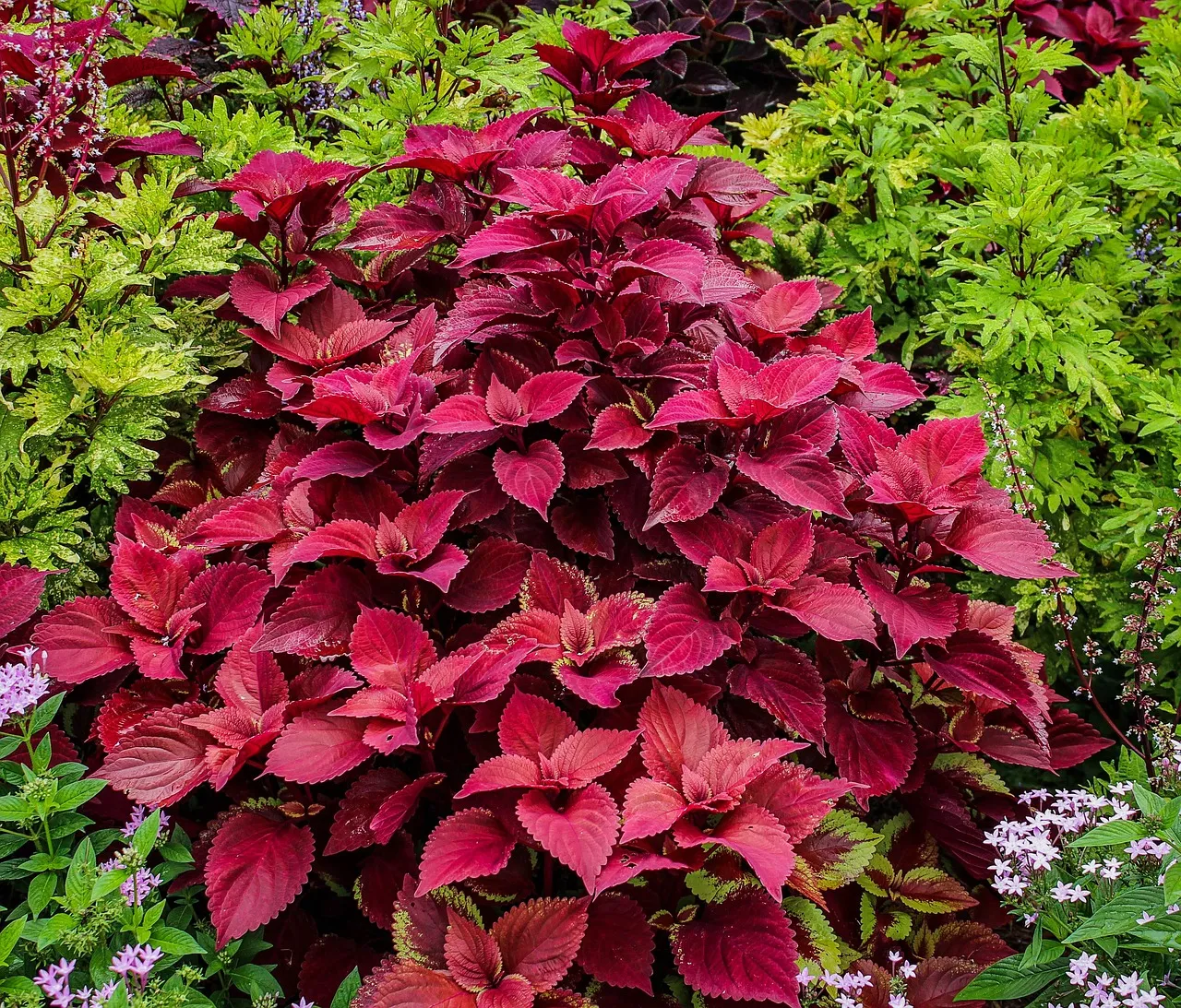
Companion planting with coleus on your balcony is a clever strategy to enhance the visual appeal of your garden and create harmonious plant combinations. Coleus, with its vibrant and varied foliage, serves as an excellent companion plant that complements a wide range of other plants.
When selecting companion plants for coleus, consider the color and texture of the foliage to create striking contrasts or harmonious blends. For instance, pairing coleus with plants that have bold, solid-colored leaves, such as caladiums or elephant ears, can create a dramatic effect. On the other hand, combining coleus with plants that have delicate or feathery foliage, like ferns or ornamental grasses, can add an element of softness and texture to your balcony garden.
Another aspect to consider is the height and growth habit of the companion plants. Mixing coleus with taller plants, such as cannas or tall flowering perennials, can create an eye-catching vertical display. Alternatively, you can create a layered effect by placing shorter companion plants, like impatiens or begonias, in front of the coleus. This adds depth and dimension to your balcony garden.
In addition to foliage and height considerations, it’s beneficial to choose companion plants that have similar sunlight and water requirements as coleus. Since coleus thrives in partial shade to full sun, selecting shade-loving plants like ferns or heucheras as companions can ensure that both plants receive the appropriate amount of light. Similarly, grouping plants with similar water needs will simplify your watering routine and promote healthier growth.
Beyond aesthetics, companion planting with coleus can also offer practical benefits. Certain companion plants, such as marigolds or petunias, can help deter pests with their natural repellent properties. Additionally, mixing plants with different root structures, like shallow-rooted coleus with deep-rooted vegetables, can help optimize space and nutrient utilization in container gardens.
Experiment with different combinations and get creative with your companion planting choices. Don’t be afraid to mix and match various colors, textures, and heights to create a visually stunning and well-balanced balcony garden. Observing the interplay between coleus and its companion plants will not only elevate the beauty of your space but also foster a dynamic and thriving ecosystem on your balcony.
Remember to provide proper care and attention to all the plants in your companion planting scheme, ensuring they receive adequate water, sunlight, and nutrients. With careful selection and thoughtful design, your balcony garden will become an inviting oasis that showcases the charm and versatility of coleus alongside its compatible companions.
Creative Ways to Use Coleus in Balcony Decor: Vertical Gardens and Hanging Baskets
Coleus, with its vibrant foliage and versatile growth habit, offers exciting possibilities for creative balcony decor. Incorporating coleus in vertical gardens and hanging baskets not only maximizes space but also adds a unique touch to your balcony.
Vertical gardens are an excellent way to make the most of limited balcony space. Utilizing trellises, wall-mounted planters, or modular vertical systems, you can create stunning displays of cascading coleus foliage. Planting coleus in elevated containers and allowing their foliage to spill downward creates a striking visual effect, bringing life and color to otherwise unused vertical surfaces. Combine different coleus varieties with contrasting leaf shapes and colors to achieve a captivating tapestry of foliage.
Hanging baskets provide another opportunity to showcase the beauty of coleus in your balcony decor. Choose baskets with sufficient depth and drainage holes to accommodate the root system of coleus plants. Opt for trailing or cascading coleus varieties that will drape gracefully over the sides of the baskets, adding a dynamic and eye-catching element to your balcony. Mix and match coleus with other trailing plants like ivy or trailing petunias for a lush and layered effect. Hang these baskets at different heights to create a visually appealing display and add depth to your balcony design.
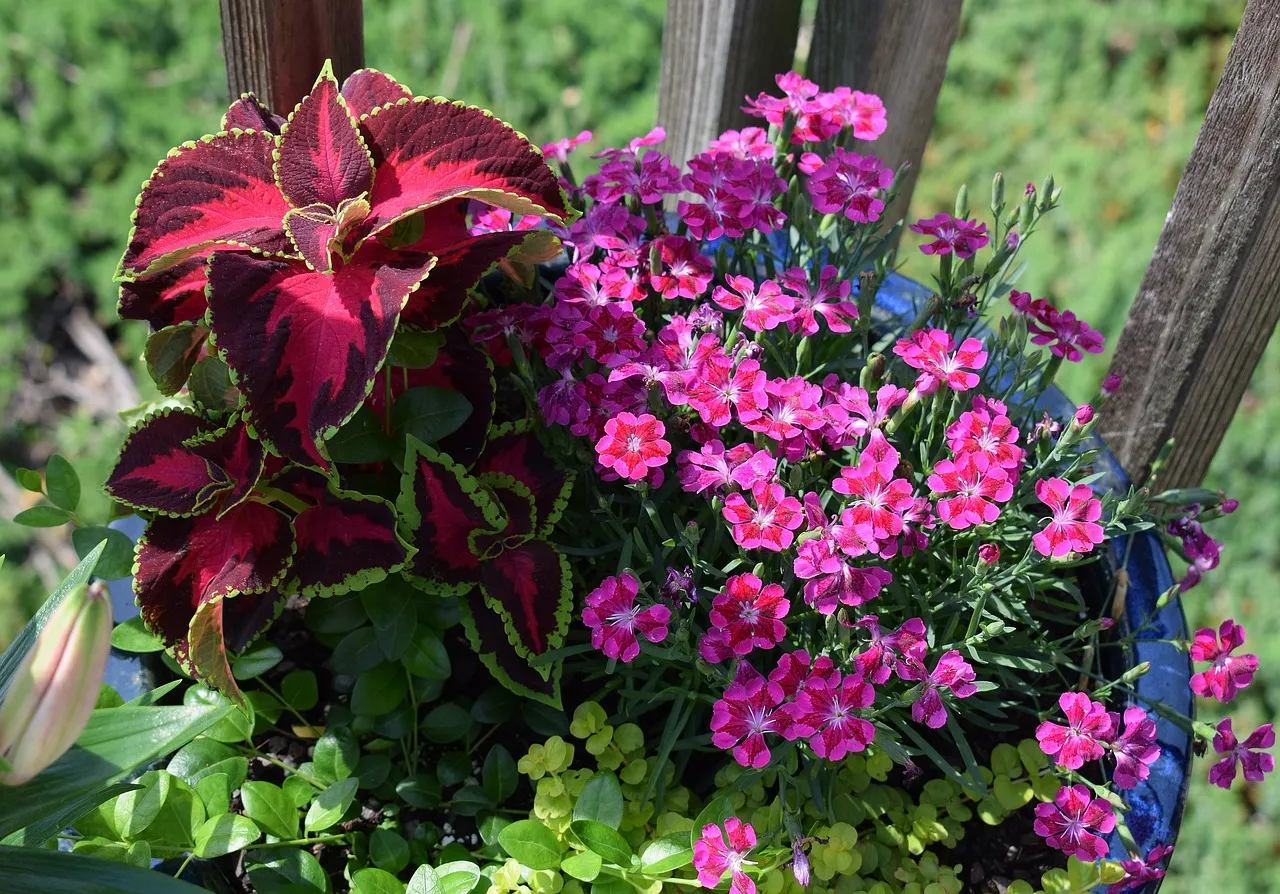
Incorporating coleus in vertical gardens and hanging baskets not only adds aesthetic appeal but also offers practical benefits. Vertical gardens and hanging baskets can help maximize sunlight exposure for coleus plants, ensuring they receive the light they need to thrive. They also provide excellent air circulation, reducing the risk of fungal diseases and promoting healthy growth.
When using coleus in vertical gardens or hanging baskets, it’s essential to consider their care requirements. Provide adequate water, making sure not to overwater or let the soil dry out completely. Monitor moisture levels regularly and adjust your watering habits accordingly. Additionally, check the individual light preferences of the coleus varieties you choose and position them in locations that meet their specific needs.
By incorporating coleus in vertical gardens and hanging baskets, you can transform your balcony into a lush and visually captivating space. Whether you have a small balcony or a spacious one, the vertical dimension can be utilized creatively to showcase the stunning foliage of coleus. Experiment with different arrangements, mix coleus with other trailing plants, and let your imagination soar as you design a balcony decor that reflects your personal style and love for gardening.
Troubleshooting Common Coleus Issues on Your Balcony: Tips for Problem Solving
As you cultivate coleus on your balcony, you may encounter common issues that can affect the health and vitality of your plants. However, with a little troubleshooting and problem-solving, you can address these concerns and ensure the continued growth and beauty of your coleus.
One common issue that coleus plants may face is wilting or drooping leaves. This could be a sign of overwatering or a lack of water. To determine the cause, check the moisture level of the soil by inserting your finger into the top inch of the soil. If it feels dry, your coleus may need watering, but if it feels excessively wet, it may be suffering from overwatering. Adjust your watering routine accordingly, allowing the soil to dry out slightly between waterings to prevent root rot and promote healthy growth.
It’s important to be mindful of yellowing or discolored leaves when caring for your coleus. Yellow leaves can indicate various issues, including nutrient deficiencies, excessive sunlight, or pest infestation. To address this, consider fertilizing your coleus with a balanced fertilizer to provide the necessary nutrients. If the yellowing persists, inspect your plants for signs of pests such as aphids or spider mites, and take appropriate measures to control them, such as using organic insecticidal soap or neem oil.
Additionally, if your coleus exhibits leggy or elongated growth with sparse foliage, it may be a sign of inadequate light. Ensure that your coleus is positioned in a spot that receives sufficient sunlight or bright, indirect light. If your balcony doesn’t offer enough natural light, consider supplementing with artificial grow lights to encourage compact and bushy growth. By addressing these issues, you can help your coleus thrive and maintain its vibrant appearance on your balcony.
Coleus plants are generally resilient and relatively resistant to diseases. However, they can occasionally be affected by fungal infections, such as powdery mildew or root rot. To prevent these issues, provide good air circulation, avoid overcrowding plants, and ensure proper drainage in your containers. If you notice signs of fungal infections, such as white powdery patches or rotting roots, remove affected plant parts and consider applying a suitable fungicide.
It’s important to regularly inspect your coleus plants for signs of pests, diseases, or other issues. Early detection and prompt action can help prevent further damage and ensure the overall health of your plants. Stay vigilant, maintain good cultural practices, and be proactive in addressing any problems that may arise.
By troubleshooting common coleus issues on your balcony, you can overcome challenges and provide optimal care for your plants. Remember to observe your coleus closely, understand its specific needs, and make adjustments accordingly. With proper attention and care, you can enjoy a thriving and beautiful coleus garden on your balcony.
Harvesting and Utilizing Coleus Leaves: Culinary and Medicinal Applications
Coleus leaves are best known for their ornamental use, but they can also be harvested and used for culinary and medicinal purposes, making them a delightful addition to your balcony garden. Brilliant and fragrant, coleus leaves offer a unique flavor and potential health benefits to enhance your culinary creations and wellness.
As for culinary uses, coleus leaves can be used to add a special flavor to dishes. The leaves have a hint of citrus and mint flavor, making them a great addition to salads, drinks and desserts. Simply pick fresh coleus leaves from your balcony garden, wash them well, and chop them into small pieces before adding them to your recipe. The leaves provide a refreshing, slightly tangy flavor that adds depth and complexity to dishes.

In addition to culinary uses, coleus leaves have also been traditionally used for medicinal purposes. They are thought to have anti-inflammatory and antioxidant properties and may have beneficial effects on overall health and well-being. The leaves can be used as herbal teas, tinctures, or fortified oils to take advantage of their potential medicinal benefits. However, it is important to note that further studies are needed to fully understand and validate the therapeutic properties of coleus leaves.
When harvesting coleus leaves for culinary or medicinal purposes, it’s best to select mature leaves that are free from damage or disease. Gently pluck the leaves from the stem, taking care not to damage the plant. As a general rule, it’s recommended to harvest leaves in moderation, allowing the plant to continue growing and thriving.
Before incorporating coleus leaves into your culinary creations or medicinal preparations, it’s advisable to consult reliable sources and experts to ensure proper usage and dosage. It’s also important to remember that not all coleus varieties are suitable for consumption, as some may contain compounds that could be harmful or have adverse effects.
By exploring the culinary and medicinal applications of coleus leaves, you can unlock the full potential of this versatile plant. Experiment with different recipes and preparations, and enjoy the unique flavors and potential health benefits that coleus leaves can offer. However, always exercise caution, do thorough research, and seek professional advice when utilizing coleus leaves for culinary or medicinal purposes.
Inspiring Balcony Garden Designs Featuring Coleus: Showcasing Beautiful and Functional Spaces
Creating an inspiring balcony garden design featuring coleus can transform your outdoor space into a stunning and functional oasis. The vibrant foliage and wide range of colors and patterns offered by coleus plants make them perfect candidates for adding visual interest and beauty to your balcony garden.
One way to showcase the beauty of coleus in your balcony garden design is by creating eye-catching arrangements and displays. Consider using coleus as focal points or accents in your planters, hanging baskets, or vertical gardens. Mix and match different coleus varieties to create dynamic color combinations and contrasting patterns that catch the eye. Pair them with other plants that complement their vibrant foliage, such as flowering annuals or foliage plants with contrasting textures.
To make the most of your balcony space, explore different container gardening techniques and arrangements. Vertical gardens are a fantastic way to maximize space while creating a stunning visual impact. Incorporate cascading coleus varieties along with other trailing plants to create a lush and dynamic green wall. Alternatively, utilize tiered plant stands or shelving units to create multi-level displays, showcasing the beauty of coleus at different heights.
Balcony gardens are not just about aesthetics; they can also serve functional purposes. Use coleus strategically to create privacy screens or natural barriers that define different areas within your balcony. Their dense and colorful foliage can offer privacy from neighboring buildings or create a cozy and intimate atmosphere. Consider using taller coleus varieties or combining them with other tall plants to achieve the desired screening effect.

When designing your balcony garden, take into account the specific growing requirements of different coleus varieties. Some coleus prefer full sun, while others thrive in partial shade. Take note of the sunlight patterns on your balcony throughout the day and select coleus varieties accordingly. This will ensure that your plants receive the right amount of light to flourish and maintain their vibrant colors.
Ultimately, designing an inspiring balcony garden featuring coleus is all about expressing your creativity and personal style. Let your imagination run wild as you experiment with different arrangements, color schemes, and container choices. Be bold in your choices and create a space that reflects your personality and brings joy to your everyday life.
Conclusion
In conclusion, growing coleus on your balcony can be a fun and rewarding experience, allowing you to create a dynamic and eye-catching outdoor space. By following the care tips and tricks provided in this article, you can ensure the successful growth and care of your coleus plant.
From choosing the right coleus varieties to understanding their specific needs, such as sun or shade requirements, you can customize your balcony garden to suit your preferences and conditions. available. With a wide variety of coleus available, including those suitable for growing in pots, it’s easy to find the perfect plants for your balcony.
Coleus plants are a captivating addition to any balcony garden, offering a wide range of colors that encompass vibrant flowers and richly hued leaves. By incorporating different coleus color varieties into your outdoor space, you can create eye-catching displays that bring beauty and visual interest. Whether you opt for annual or perennial coleus plants, their success relies on proper care and attention.
Ensuring that coleus plants receive regular watering, suitable soil conditions, and adequate fertilization is essential for promoting healthy and lush growth. Whether you choose to cultivate coleus in pots, containers, or directly in the ground, understanding and meeting their specific care requirements is vital for their overall well-being.
Moreover, coleus plants lend themselves to versatile use in balcony garden designs. Whether you envision a tranquil shade garden, a vibrant mixed container arrangement, or integrating coleus into your landscape design, their adaptability and stunning foliage make them an excellent choice. Coleus plants can effortlessly enhance the aesthetic appeal of any outdoor space, allowing you to create a personalized and captivating atmosphere.
By incorporating different coleus color varieties and providing proper care, you can transform your balcony garden into a vibrant haven bursting with the beauty of these remarkable plants. So, embrace the versatility of coleus, experiment with their diverse colors, and watch as your outdoor space flourishes with their stunning foliage.
Incorporating coleus as a houseplant or using them in borders, hanging baskets, or vertical gardens provides numerous possibilities for creative expression. With their diverse leaf and flower colors, coleus can add a pop of color and visual interest to any space.
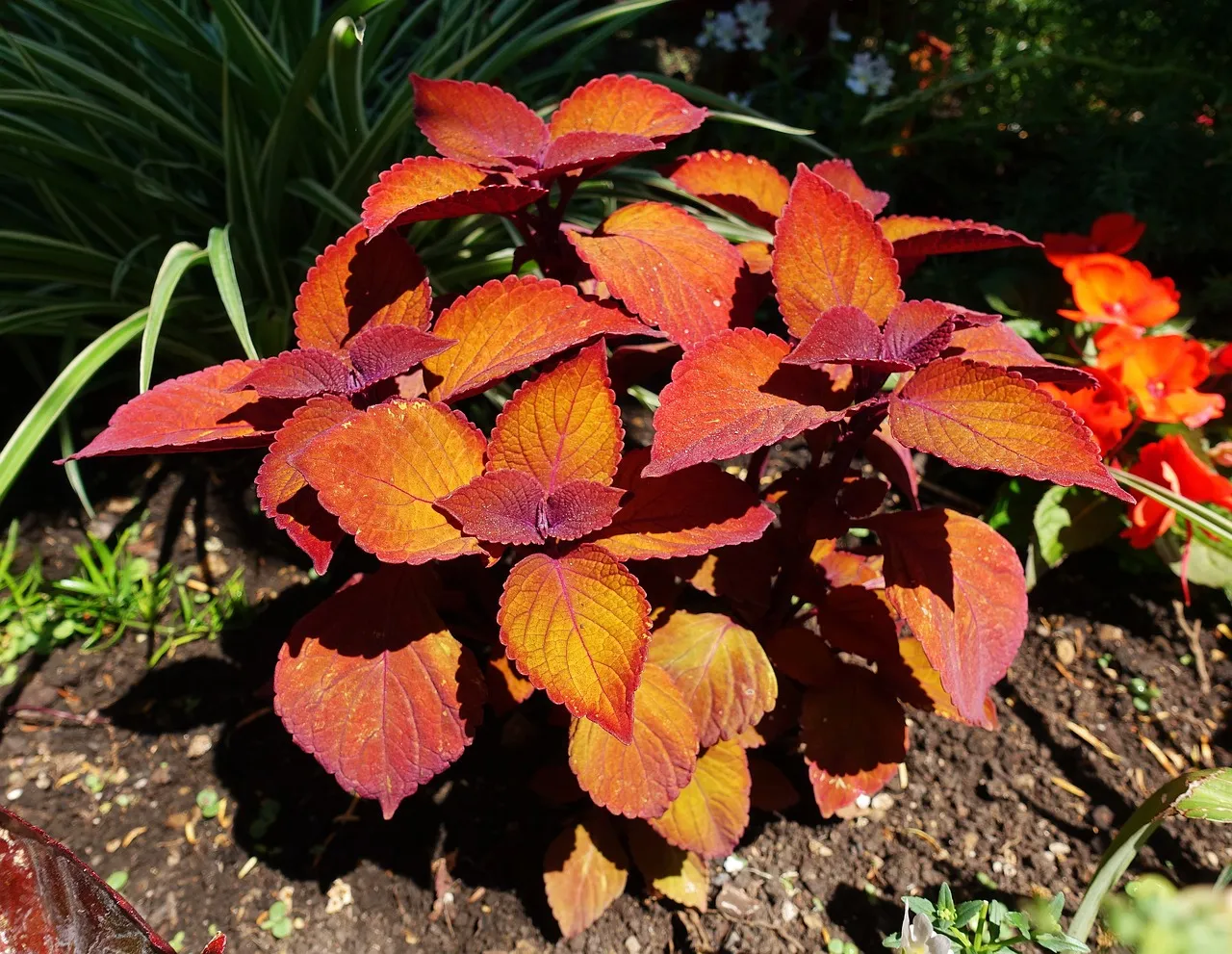
In summary, growing coleus on your balcony offers a plethora of possibilities for creating a beautiful and thriving outdoor oasis. With the wide variety of coleus plants for sale and their adaptable nature, you can enjoy the benefits of growing coleus in containers, caring for them indoors or outdoors, and exploring different coleus gardening techniques. So, unleash your creativity, embrace the care tips and tricks shared in this article, and embark on the journey of growing coleus on your balcony. Your efforts will be rewarded with a stunning and vibrant display of nature’s beauty right at your doorstep.
Caring for your coleus plants requires attention to their specific needs, including sunlight requirements. Understanding the ideal light conditions for each variety will help you find the perfect spot on your balcony to ensure their optimal growth. Proper watering, soil quality, and fertilizing practices are also essential for maintaining the health and vibrancy of your coleus plants.
As you gain more experience in growing coleus, you can explore various gardening techniques such as container gardening and vertical gardens. These innovative approaches maximize space and allow you to create stunning displays, utilizing coleus as a beautiful design element. Whether you prefer the compactness of containers or the vertical beauty of hanging baskets, coleus adapts well to different growing environments and adds a touch of elegance to your balcony.
In conclusion, growing coleus on your balcony offers a wonderful opportunity to bring nature’s beauty to your outdoor space. With their vibrant colors, striking patterns, and easy care requirements, coleus plants are suitable for gardeners of all levels. By following the care tips and tricks provided in this article and exploring the wide range of coleus varieties available, you can create a visually captivating balcony garden that reflects your personal style. So, get ready to immerse yourself in the beauty and charm of coleus as you embark on your journey of growing these remarkable plants on your balcony.
#GrowingColeus
#BalconyGarden #CareTips
#ColeusCare
